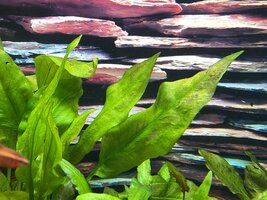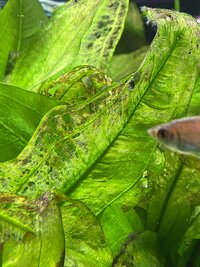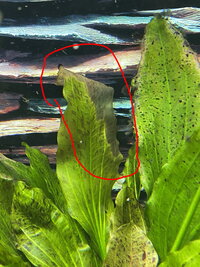I will do tomorrow. Believe it or not, all those bad leaves are in the last 7 days, when I last did some maintenance and I’ve just not had time to do anything. The damage has accelerated. I’m also going to put cucumber in as @dw1305 suggested.On a serious note you really need to remove all those decaying echinodorus leaves and the decaying cryptocoryne leaves, also get rid of anything that's infested with bba. Non of these leaves will recover and are only going to drag the tank down further.
To increase the iron, I assume I need to add just iron to my self made mix and not increase all the micros?





